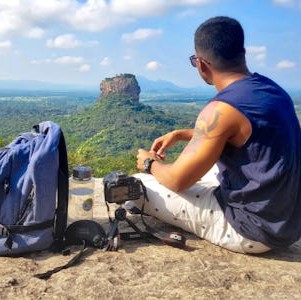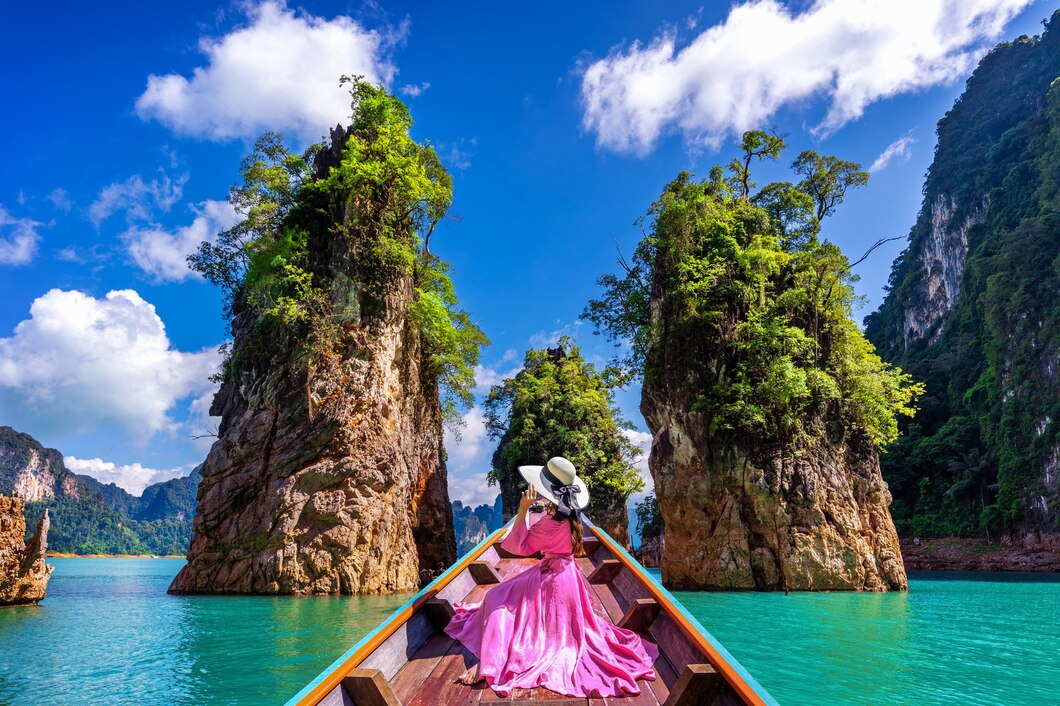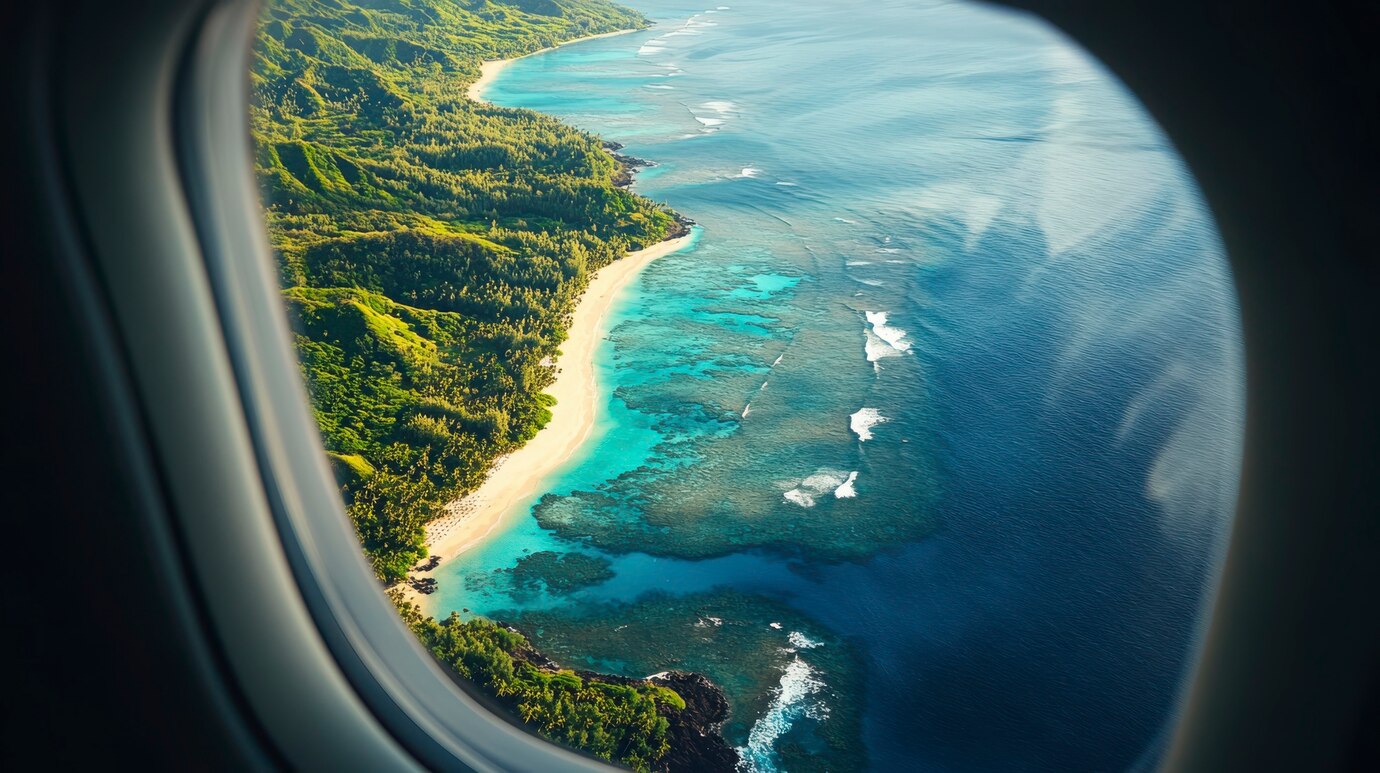A boat tour of the Rock Islands in Palau offers...
Read MorePalau Travel Guide
Palau Travel Guide
Overview
Palau, a small but stunning island nation in the Pacific Ocean, offers some of the most pristine and breathtaking natural landscapes in the world. Comprising over 500 islands, Palau is renowned for its crystal-clear waters, vibrant coral reefs, and diverse marine life, making it an exceptional destination for eco-tourism, diving, and relaxation. Located just east of the Philippines, it is part of the Micronesia region. While it is one of the least visited countries globally, its unspoiled environment and unique culture make it a hidden gem for travelers looking to explore paradise-like beaches and rich biodiversity.
Palau’s population is small, with just over 18,000 residents, but its warm and friendly locals, mostly from the Palauan, Filipino, and other Pacific islander communities, are welcoming to visitors. With a history influenced by various cultures, including the Spanish, German, Japanese, and American, Palau offers a fascinating blend of traditions, historical sites, and modern comforts.
Quick Facts
- Capital: Ngerulmud (Located on Babeldaob Island)
- Largest City: Koror
- Population: Around 18,000 people
- Official Languages: Palauan, English
- Currency: United States Dollar (USD)
- Time Zone: Palau Standard Time (PWT), UTC +9
- Visa: Citizens of most countries can enter Palau visa-free for stays of up to 90 days. However, it is always a good idea to check visa requirements based on your nationality before traveling.
Flights
Palau is served by the Roman Tmetuchl International Airport in Koror, the country’s main city. The island nation is accessible by air from major hubs in Asia, with connecting flights from cities like Manila, Seoul, and Guam. Airlines such as United Airlines, Asiana Airlines, and Palau’s local airline, Palau Pacific Airways, operate flights to and from Palau.
Flights from nearby countries like the Philippines are frequent and take about 3–4 hours. If you are traveling from outside Asia or the Pacific, you would most likely need to connect via Guam or Manila, which has direct international flights. Although Palau’s international flight connectivity is somewhat limited, the convenience of connecting flights via larger airports in the region makes it accessible for international travelers.
Safety
Palau is one of the safest countries to visit in the Pacific. With a very low crime rate, travelers can feel secure walking around the main islands, even at night. As a small island nation, Palau has a close-knit community, and visitors are often welcomed warmly by locals.
However, as with traveling to any island destination, there are some environmental safety considerations to keep in mind. Palau’s oceanic climate and tropical environment mean occasional storms, particularly during the typhoon season, which runs from June to November. It’s important to check weather forecasts before traveling to avoid hurricanes or extreme weather conditions. Additionally, if you’re exploring the waters, it’s essential to follow safety guidelines for diving, snorkeling, and other water activities due to the strong currents that can be found in certain areas.
Climate
Palau has a tropical rainforest climate, characterized by warm temperatures, high humidity, and abundant rainfall throughout the year. The temperature typically ranges from 77°F (25°C) to 88°F (31°C), making it warm and pleasant year-round.
Dry Season (December to May): The dry season is considered the best time to visit Palau, as it sees the least amount of rainfall, with temperatures hovering around 80°F (27°C). This is the peak tourist season, and it is ideal for outdoor activities like hiking, snorkeling, and diving.
Wet Season (June to November): The wet season brings increased rainfall and occasional typhoons, but showers are often short-lived and typically occur in the afternoons or evenings. While there is still much to enjoy during this season, be prepared for more unpredictable weather. The lush, green landscapes are at their most vibrant during the wet season.
Budget
Palau is a destination that offers both budget and luxury options for travelers, though it tends to be more expensive than typical Southeast Asian destinations due to its remote location and limited infrastructure. The cost of your trip will largely depend on the type of experience you seek.
Accommodation: Budget accommodations in Palau are limited, but you can find reasonably priced guesthouses or budget hotels in Koror, with rates starting around USD 60–100 per night. Mid-range hotels and resorts typically range from USD 150–250 per night, while more luxurious resorts and private islands can cost upwards of USD 300–500 per night or more.
Food: Eating out in Palau can be moderately priced. Local restaurants offer simple and fresh meals, such as fish and rice, with meals costing around USD 10–20. International restaurants or more upscale dining options can charge USD 25–50 per meal. Supermarkets in Koror carry imported goods, and if you’re on a tight budget, self-catering is a cost-effective option.
Transport: Public transportation options are limited in Palau, so most visitors rent a car or take taxis for getting around the main islands. Car rental prices range from USD 50–80 per day, and taxis are relatively affordable, though it is common for visitors to book a full-day tour, which can cost around USD 100–150 per person, depending on the length and type of tour.
Activities: Palau offers a range of outdoor activities, including snorkeling, diving, kayaking, and eco-tours. Diving is one of the main attractions, with dive packages typically priced around USD 100–150 for a day’s excursion. Snorkeling trips and kayaking rentals are more affordable, typically ranging from USD 30–80. Guided tours to places like Jellyfish Lake or traditional cultural experiences can cost anywhere from USD 50 to 200.
A typical budget traveler can expect to spend around USD 100–150 per day, including accommodation, meals, and basic activities. Mid-range travelers will likely spend between USD 200–300 per day, while those seeking luxury experiences could spend upwards of USD 400 per day, depending on their accommodation choices and activities.
Conclusion
Palau is a paradise for nature lovers, adventure seekers, and those looking to escape to an untouched, idyllic island retreat. From its extraordinary coral reefs and abundant marine life to its lush rainforests and rich culture, Palau offers an unforgettable travel experience. Though it may be more remote and expensive compared to other tropical destinations, the unique and pristine environment makes it well worth the visit for those seeking an authentic and serene getaway. Whether you’re diving in the Rock Islands, exploring ancient Palauan villages, or simply relaxing on its stunning beaches, Palau offers a truly unique experience in the heart of the Pacific.
Featured Post
About Me

As a travel blogger, I'm a curious wanderer with a passion for uncovering the world's hidden secrets and sharing unforgettable experiences with fellow travellers.
Categories
- Africa
- America
- Argentina
- Arizona
- Aruba
- Asia
- Bali
- Belize
- Bhutan
- Brunei
- Cambodia
- Caribbean
- Central America
- Colorado
- Destinations
- East Asia
- Egypt
- Europe
- Flores
- Greece
- Guatemala
- Hawaii
- Hikes
- Home-destinations
- Iceland
- India
- Indonesia
- Japan
- Java
- Maine
- Maldives
- Mexico
- Mynamar
- Nepal
- New Zealand
- North America
- North Island
- Oceania
- Palau
- Peru
- South America
- South Asia
- South East Asia
- South Island
- Spain
- Taiwan
- Travel Guides
- Turkey
- United States
- US National Park
- Utah
Post
Latest post about New Zealand
Palau Scenic Flight Over The Rock Islands: How To Do It
Experiencing Palau from the air is a breathtaking way to...
Read More

